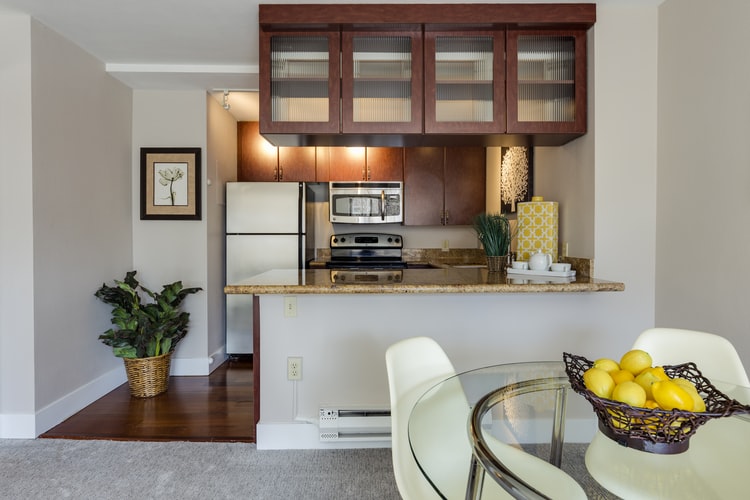There is no one-size-fits-all approach when it comes to interior design. Each design space comes with its own perks, unique styles and design opportunities. Each space also comes with its own challenges such as unusual window shapes, size restrictions and price limitations.
Breaking into the interior design industry can be hard, especially for novice designers. You will rarely encounter a challenge that is similar to another. There are a few basic rules that if broken, can be a disaster to the design of any home.
Drapes and curtains are your best friend
Whether your client prefers textured, red patterned or plain green curtains, there is always appeal to be had with a classic draping curtain. To achieve the desired free-flowing draping effect of the curtain, you will need to ensure to use two to three times the width of the window for the most appealing look. Otherwise, it can affect the look of the curtains, and make your desired look less achievable.
It does not take a designer to tell you that curtains can elevate the look of your windows. With their elegant patterns and unique designs and textures, ready made curtains really can change the look of a room, and they’re fairly inexpensive for your clients too. Their transformative effects really are unmissable.
Try not to push furniture against the wall
We’ve all seen homes with multiple furniture pieces in one room, with many people trying to make the most out of their space. However, one of the biggest mistakes we see as designers is people pushing their furniture right up against the wall. We feel the only thing that should be pushed against the wall is a piece of art, with no exceptions.
It may seem counterintuitive, but if you are looking for your room to look bigger, pushing all of the furniture against the walls is not the way to do it. In fact, it can do the opposite. Furniture needs to have space around it, and in doing so it brings a closer atmosphere to the room and ties everything together nicely. It also brings a better sense of balance to the room, even in a smaller room, making sure to enhance the relationship between all the furniture elements.
Try to avoid making everything in the room match, for example, if you have chosen a green and white theme for example, opting for a green throw, white carpet and green and white sofa is not necessarily the best way to go. instead, try to incorporate contrasting colors and geometric designs and add in subtle bits of colour like a neutral sofa, with some patterned cushions and green curtains for an additional pop of colour. Additionally, a large emerald flower vase could help break the monotony, creating an unique contrast.
Small rugs are a no-no
Although you may feel that a small rug may add depth and a dash of colour to your room, unless you are placing the rug in a corridor or on the doorstop, avoid decorating with tiny rugs. Not only do they make any room look smaller, but they will draw the attention away from the sofa, which can often be the centerpiece to a room. Smaller rugs will also take away space for a large rug to go, and when larger rugs can offer so much more to a room such as a contrast in texture between the following and the rug, as well as tying in the colour scheme, small rugs really have no place in your home from an interior design standpoint.
Make sure to employ a professional painter
When creating a professional standard to a room, everything will need to be in place to ensure the finished room looks pristine after all the hard work that has been done for it. And what could be worse than walking into a perfectly designed space, with chipped wall paint in the corner. It is not only unpleasant for the owner, but it can ruin the overall look and feel of the house. No longer does the space look like a professionally finished, perfectly designed room, it becomes to look unfinished, tired and unprofessional.
To avoid this, be sure to contact a professional who is able to conduct all paintwork in the areas you are designing. Not only will this give a better finish to the room, but will avoid any unnecessary end costs when having to re-employ a professional painter to finish off the job. Make sure that before any paintwork starts, all previous paintwork is sanded down and scraped off the walls to create a smoother finish. Painting over these previous mistakes will allow for imperfections to show through the new paintwork, despite how insignificant they may seem.
Create a focal point in the space
A room with complete visibility can be boring in any home. As an interior designer, it is critical that you are able to create a focal point in each room being worked on. Whether that be an oversized art feature that you found at one of your local antiques fairs, a unique high chair or a distinctive floor rug, make sure that it demands attention and draws any visitors in, giving something for them to be curious about the moment they enter the room.
Room balance is key
Striking balance is instrumental in creating equilibrium in a room. As you arrange a room it is essential to maintain symmetry throughout. If you have one large sofa on one side of a room, make sure to position two smaller chairs on the other side of that room. There are few scenarios that designs will call for complete asymmetry, meaning you should try to strike a balance between each element in the living space.
All in all, what novice interior designers must realise is that even seasoned professionals in their field had to have started somewhere. If you follow the above tips, it will feel as though you have been a well-established designer for decades.



